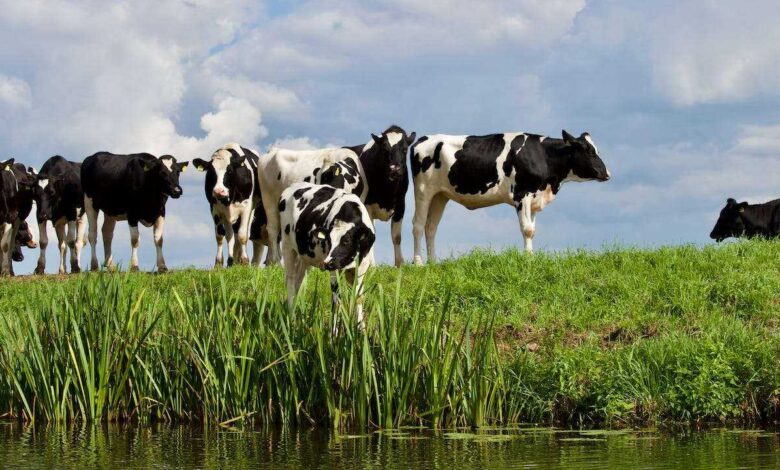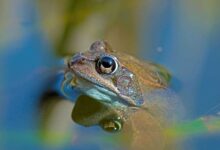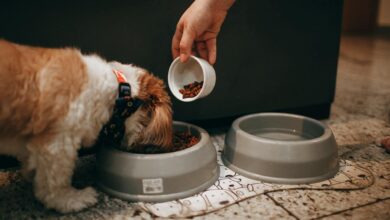
Owning a pet cow is a unique and rewarding experience that goes beyond traditional notions of farm life. This ultimate guide is designed to help you navigate the journey of caring for a pet cow, ensuring they live a happy, healthy, and fulfilling life right in your backyard.
1. Beyond the Farm:
Choosing the Right Furry Friend Based on Size, Temperament, and Needs
Selecting the perfect cow breed is crucial for a positive companionship experience. For beginners, docile and smaller breeds like Jerseys or Dexters are often recommended. Consider the available space, climate, and your level of involvement with your pet cow.
Breed options:
- Jersey: Known for a gentle disposition and medium size.
- Dexter: Compact and adaptable, suitable for smaller spaces.
- Holstein: Larger, with a friendly temperament.
2. Udderly Amazing Companionship:
Designing a Safe and Comfortable Shelter for Your Pet Cow
Your cow’s shelter is more than a roof over their head. It should provide protection from the elements, good ventilation, and a comfortable resting area. Adequate space and easy access to water and food are vital components. Choose materials that are durable and easy to clean for hygiene maintenance.
Shelter essentials:
- Adequate ventilation: Ensure fresh air circulation to prevent respiratory issues.
- Comfortable resting area: Soft bedding to support joint health.
- Easy access to water and food: Promotes regular hydration and proper nutrition.
3. More Than Hay Bales and Hoofs:
Creating a Nutritious Diet for Optimal Cow Health and Happiness
Crafting a balanced diet involves understanding your cow’s nutritional needs. A combination of high-quality hay, fresh pasture, and possibly supplemental grains ensures a well-rounded diet. Consult with a veterinarian to tailor the diet to your cow’s specific health requirements.
Nutrition essentials:
- Hay: A staple for roughage and fiber.
- Fresh pasture: Rich in nutrients and essential for grazing behavior.
- Grains: Supplemental feed for added energy, if needed.
4. Milking the Joy of Cow Ownership:
Providing Enrichment Activities and Exercise for Your Bovine Buddies
Cows are intelligent and social animals that thrive on mental stimulation and physical activity. Enrich their lives with activities like puzzle feeders, hanging toys, and open spaces for exercise. Regular interaction strengthens the bond between you and your cow.
Enrichment ideas:
- Puzzle feeders: Stimulate cognitive abilities during feeding.
- Hanging toys: Provide entertainment and encourage physical activity.
- Open spaces: Allow free movement and encourage natural behaviors.
5. Cow Breeds for Beginners:
Training Your Pet Cow for Basic Commands and Etiquette
Training is an essential aspect of responsible cow ownership. Start with basic commands like “stay” and “come,” using positive reinforcement such as treats or affection. Consistency and patience are key to successful training.
Training tips:
- Positive reinforcement: Reward desired behavior promptly.
- Consistency: Establish a routine for training sessions.
- Patience: Allow your cow time to understand and respond.
6. Building the Perfect Bovine Abode:
Essential Veterinary Care and Common Cow Concerns
Regular veterinary care is crucial for maintaining your cow’s health. Schedule routine checkups, vaccinations, and dental care. Be vigilant for signs of common health issues such as lameness or digestive problems and seek prompt veterinary assistance when needed.
Veterinary care checklist:
- Regular checkups: Ensure a comprehensive health assessment.
- Vaccinations: Follow recommended schedules for disease prevention.
- Dental care: Regular examinations and treatments.
7. Moo-tastic Meals:
Handling Your Pet Cow Safely and Building Trust
Handling your cow safely is paramount for both your safety and the cow’s well-being. Approach with confidence, use proper equipment like halters and lead ropes, and avoid sudden movements. Building trust takes time, so be patient and consistent.
Handling safety tips:
- Approach calmly: Avoid sudden movements that may startle the cow.
- Use proper equipment: Halters and lead ropes aid in control.
- Patience and consistency: Establish trust gradually through positive interactions.
8. From Pasture to Playground:
Landscaping and Pasture Management for Happy Grazing
Create a stimulating environment for your cow by strategically landscaping pasture areas. Ensure a mix of grasses, shrubs, and trees for variety. Implement rotational grazing to prevent overgrazing and promote healthy pasture growth.
Pasture management tips:
- Variety in vegetation: Mimic natural grazing environments.
- Rotational grazing: Prevent overgrazing and maintain pasture health.
- Fencing considerations: Ensure secure fencing for safety.
9. Maintaining Moo-nificent Manners:
Finding Resources, Support, and Fellow Cow Enthusiasts
Connect with a supportive cowmunity to share experiences and seek advice. Local resources, online forums, and social media groups can provide valuable insights. Attend workshops and events to enhance your knowledge and bond with fellow cow enthusiasts.
Community connections:
- Local resources: Veterinarians, feed suppliers, and experienced cow owners.
- Online forums: Engage in discussions and seek advice from a global community.
- Workshops and events: Attend to expand your knowledge and network.
10. Hooves and Health Checkups:
Zoning Regulations, Insurance Considerations, and Responsible Ownership
Navigate the legal aspects of cow ownership by understanding zoning regulations and obtaining necessary permits. Consider insurance coverage for unexpected events. Embrace responsible ownership by providing proper care and meeting legal requirements.
Legal considerations:
- Zoning regulations: Ensure compliance with local ordinances.
- Insurance coverage: Protect against unforeseen events.
- Responsible ownership: Prioritize the well-being of your cow and adhere to legal requirements.
11. Moo-ving with Grace:
Exploring the Potential of Milk, Cheese, and Wool Production
Explore the possibilities of milk, cheese, and wool production if you have the space and resources. Understand the specific needs and considerations for each, ensuring ethical and responsible practices.
Production considerations:
- Milk and cheese: Factors such as lactation periods and storage.
- Wool: Shearing schedules and ethical practices.
12. Creating a Bovine Oasis:
Advanced Cow Care Techniques for Experienced Owners
Experienced cow owners can delve into advanced care techniques. From specialized nutrition for certain breeds to advanced medical care, elevate your cow care expertise.
Advanced care techniques:
- Breed-specific care: Tailor care to the unique needs of specific breeds.
- Specialized nutrition: Consider dietary nuances for optimal health.
13. Cowmunity Connections:
Adopting a Retired Dairy Cow
Consider the option of providing a loving home for a retired dairy cow. Understand the unique considerations and joys of caring for a pet cow in its later years.
Retired cow considerations:
- Health considerations: Addressing potential health issues in retired cows.
- Emotional well-being: Providing comfort and companionship.
14. The Legal Lowdown:
Cow Therapy and the Benefits of Bovine Companions
Explore the therapeutic benefits of bovine companionship, known as “cow therapy.” Understand how spending time with cows can positively impact mental well-being and stress reduction.
Cow therapy benefits:
- Stress reduction: Interacting with cows promotes relaxation.
- Emotional support: Cows provide non-judgmental companionship.
15. From Hay to Hobby Farm:
Building a Strong Bond with Your Cow Through Touch and Positive Reinforcement
Strengthen the bond with your cow through regular interaction, touch, and positive reinforcement. Understand your cow’s preferences and communicate affectionately.
Bonding strategies:
- Regular touch: Establish comfort with gentle touch.
- Positive reinforcement: Reward bonding behaviors with treats or affection.
Bonus: Beyond the Basics:
Responsible Waste Management and Sustainable Cow-Keeping Practices
Explore sustainable practices in cow ownership. From waste management to eco-friendly infrastructure, implement strategies for a responsible and environmentally conscious approach.
Sustainable practices:
- Waste management: Responsible disposal of manure and other waste.
- Eco-friendly infrastructure: Implementing green initiatives on your property.
Bonus: Preparing for the Long Haul:
Educational Resources and Workshops for Aspiring Cow Owners
Prepare for the long-term commitment of cow companionship. Understand the lifespan, associated costs, and the ongoing commitment required for a happy and healthy cow.
Long-term considerations:
- Lifespan: Research the average lifespan of your chosen cow breed.
- Financial commitment: Budgeting for veterinary care, feed, and other expenses.
Caring for a Pet Cow
This comprehensive guide, “From Moo to Masterpiece: A Holistic Guide to Caring for a Pet Cow,” navigates the intricate landscape of responsible cow ownership. From choosing the right breed and creating a comfortable living space to selecting a nutritious diet and exploring advanced care techniques, the guide provides a complete overview. Emphasizing ethical considerations, sustainable practices, and legal aspects, it encourages a holistic approach to pet cow care. The bonus content offers niche insights, and the conclusion highlights the unique bond formed in the journey, transforming it into a masterpiece of bovine companionship. Whether a novice or experienced owner, this guide enriches the understanding of pet cow ownership, fostering a relationship of trust, joy, and responsible stewardship.
FAQ: Caring for a Pet Cow
Q1: What factors should I consider when choosing a cow breed for a pet?
Choosing a cow breed involves evaluating size, temperament, and specific needs. Consider your available space and the level of interaction you desire with your bovine companion.
Q2: How can I design a safe and comfortable shelter for my pet cow?
Crafting a shelter involves understanding your cow’s comfort needs and local weather conditions. Ensure adequate ventilation, protection from extreme temperatures, and a comfortable resting area.
Q3: What is the ideal diet for maintaining optimal health and happiness in my pet cow?
A nutritious diet includes a balance of hay, pasture, and possibly supplements. Consult with a veterinarian to create a diet plan tailored to your cow’s specific health requirements.
Q4: How can I train my pet cow for basic commands and etiquette?
Training involves positive reinforcement, patience, and consistency. Start with basic commands like “stay” and “come,” rewarding good behavior with treats or affection.
Q5: What veterinary care does a pet cow require, and how can I address common health concerns?
Regular checkups, vaccinations, and dental care are essential. Monitor for signs of common health issues like lameness or digestive problems, seeking prompt veterinary assistance when needed.
For personalized advice on caring for a pet cow, consult with experienced bovine veterinarians and join local cow enthusiast groups.
Bonus Content: Caring for a Pet Cow
Micro-cows and miniature breeds for limited space
Discover micro-cows and miniature breeds suitable for limited spaces. Explore options that allow you to enjoy the companionship of a pet cow even in smaller backyard environments.
Adopting a retired dairy cow
Consider the option of adopting a retired dairy cow. Learn about the unique considerations and joys that come with providing a well-deserved retirement to these experienced bovine companions.
Cow therapy and the benefits of bovine companions
Uncover the therapeutic benefits of cow companionship. Explore how the presence of a pet cow can positively impact mental and emotional well-being, offering a unique form of therapy.
Building a strong bond with your cow through touch and positive reinforcement
Enhance your bond with your pet cow through touch and positive reinforcement. Learn how these practices contribute to a strong and trusting relationship between you and your bovine friend.
Creative enrichment activities like puzzle feeders and obstacle courses
Keep your pet cow mentally stimulated with creative enrichment activities. Explore the world of puzzle feeders and obstacle courses, adding an element of fun to their daily routine.
Responsible waste management and sustainable cow-keeping practices
Embrace responsible waste management and sustainable cow-keeping practices. Discover eco-friendly approaches that minimize environmental impact, aligning with ethical and responsible cow ownership.
Educational resources and workshops for aspiring cow owners
Access educational resources and workshops for aspiring cow owners. Equip yourself with knowledge and skills essential for a successful and fulfilling journey into pet cow ownership.
Connecting with local veterinarians and animal shelters experienced with bovines
Forge connections with local veterinarians and animal shelters experienced in caring for bovines. Establishing a network of support ensures expert guidance and assistance whenever needed.








